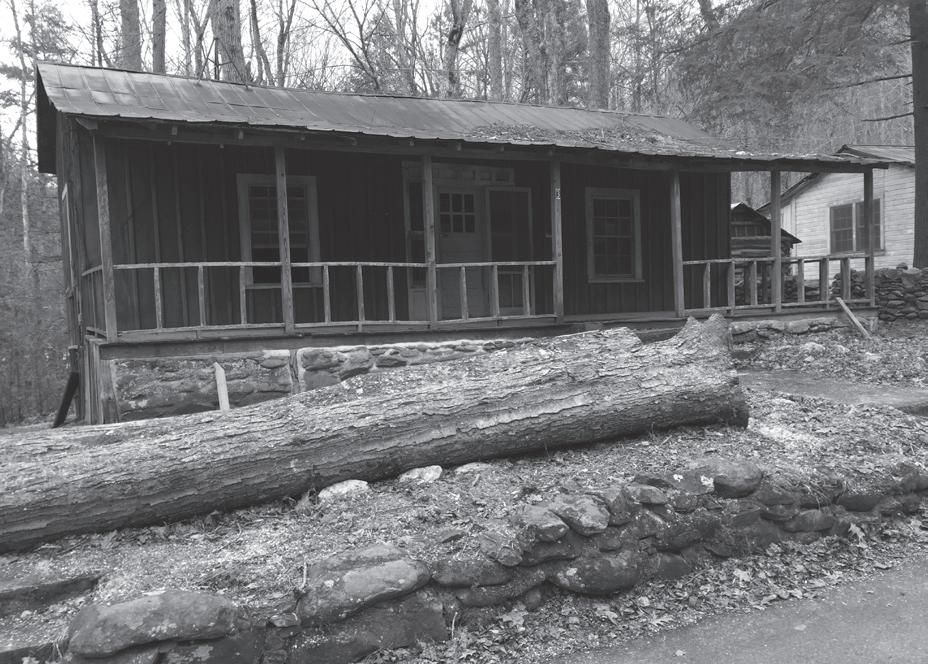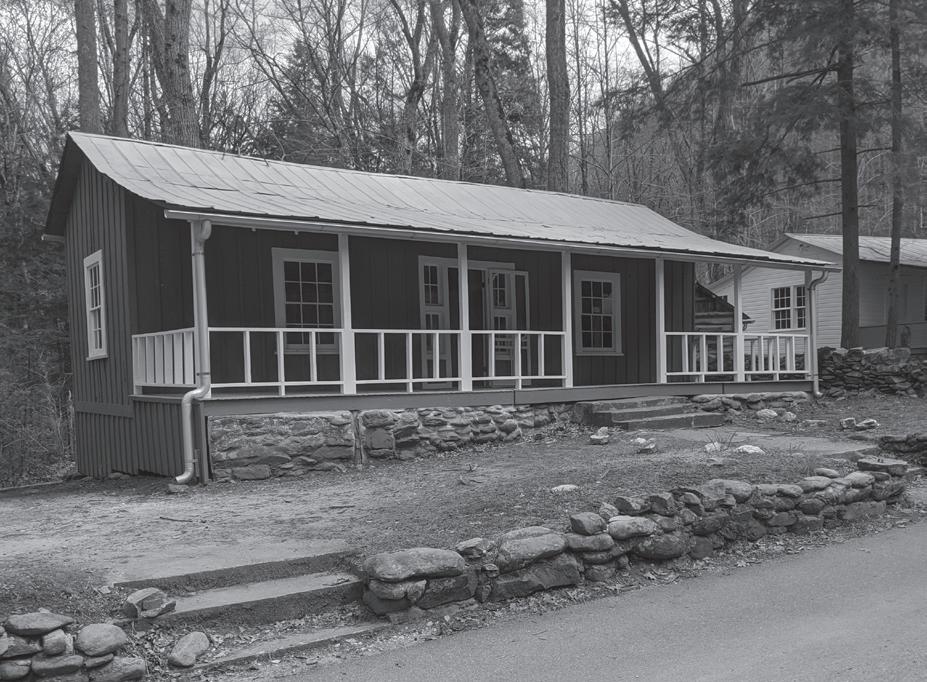
2 minute read
Elkmont’s Daisy Town
Travel Through Time in Elkmont’s Daisy Town
Renovated cabins and interpretive volunteer crew offer glimpse of early tourism in the park
Visitors who stop by the Elkmont area of the park may notice some fresh renovations to a row of houses historically known as Daisy Town. The park service is working to preserve the 18 oldest structures built between 1914 and 1917 on the site where nearly 60 summer vacation homes once dotted the landscape. About half of the oldest houses are completely renovated, and staff hope to have the rest finished in the next several years.
The original homeowners were wealthy Knoxville residents and members of the Appalachian Club who bought the land from Little River Lumber Company. The owners were also early supporters of Great Smoky Mountains National Park.
When the park was established in 1934, many families retained their cabins under lifetime leases, the last of which expired in 2001.
The Daisy Town renovations honor the tourism history of the Smokies. Park visitors can now walk through the finished homes and see glimpses into the lives of the families who vacationed there each summer. To share more about the homes and the area’s history, volunteer interpreters are available in Elkmont to speak with visitors from 9 a.m. to 4 p.m. daily. Visitors can also look forward to a digital tour of Daisy Town, which is currently being developed within the National Park Service app.
Some people might be tempted to call Elkmont a ‘ghost town,’ but Free doesn’t see it that way. Renovations and volunteer programs are just a couple ways the park keeps these stories going.
This picture was taken in 1914 at the Appalachian Club’s “pool” on the Little River. The swimming hole was a favorite spot for families who spent summers vacationing in Daisy Town. Photo courtesy of GSMNP archives.


Before and after: The Higdon Cabin in March 2017, prior to restoration, and in April 2021, with restoration complete.
The historic preservation crew, a small group of uniquely talented professionals, uses traditional techniques and materials to rehabilitate deteriorating buildings. The park maintains more than 100 historic buildings in total, each conveying their own story.
Photos by Jim Matheny and Emma DuFort









